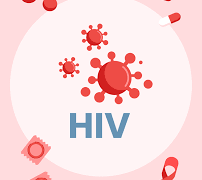A Professor of Epidemiology and Public Health, University of Bern, Switzerland, Nicola Low, says asymptomatic patients are about a third as infectious as symptomatic patients, and presymptomatic people are much more similar in infectiousness.
Asymptomatic patients refer to people who are infected but never develop any symptoms, while presymptomatic refer to infected people who have not yet developed symptoms but go on to develop symptoms later.
Prof. Low spoke on the role of asymptomatic COVID-19 transmission at a webinar organised by the BMJ, a weekly peer-reviewed medical trade journal.
Low said, “To know if someone is truly asymptomatic, you have to follow them up for long enough to develop symptoms.
“Everyone is asymptomatic at the very beginning of infection until they either develop symptoms. This means that they are presymptomatic, unless someone remains asymptomatic throughout the course of viral infection.
“You can’t distinguish between someone who is presymptomatic and someone who is going to remain asymptomatic.
“To know if someone is truly asymptomatic, you have to follow them up for long enough to develop symptoms if they are going to.”
In the same vein, a researcher and Consultant in Public Health working for NHS Bristol, Angela Raffle, said there is a need to widen the net and encourage people with non-specific symptoms to behave as though they are infectious.
“I also think that a weakness in our system is that the first step is not a phone call to a call centre- If we had this, then tests could be directed, advice to isolate and talk to your contacts straight away and support needs to be identified.”
Also speaking, a Senior Consulting Fellow, Global Health Program, Royal Institute of International Affairs, Chatham House, Brian McCloskey said testing people without symptoms brings a different dynamic to the debate that requires considering the principles established for screening.
McCloskey added that testing for COVID-19 followed by appropriate action can help the transmission of the virus.
“It is important to realise that testing for positives and testing for negatives are fundamentally different concepts and require different concepts and require different approaches and different tests.
“Testing people without symptoms bring a different dynamic to the debate. Testing does not stop transmission; rather, testing followed by appropriate action does.
“We have not fully defined what we are trying to do. We need to describe this within a holistic public health program.”
According to him, the challenges of testing are wrong results and false positives are only an issue with asymptomatic testing.
“We need to move on and look at what might be the right role for mass or SMART testing in the COVID-19 response in the context of good public health principles. This is not about saying mass testing is inherently wrong.
“Testing people without symptoms brings a different dynamic to the debate that requires us to consider the principles established for screening and testing people without local resources won’t stop transmission,” he said.
McCloskey said to control the outbreak of infections, there is a need to identify the cases and isolate and treat them as necessary, identify contacts and isolate them as necessary and reverse contact trace if possible to identify clusters and super spreading events.















Discussion about this post